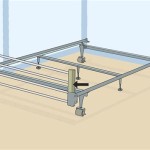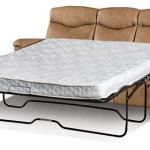When Can You Transition From Crib To Toddler Bed?
The shift from a crib to a toddler bed is a significant developmental milestone. It symbolizes your child's growing independence and readiness for new challenges. However, determining the appropriate time to transition can be a perplexing question for parents. This comprehensive guide explores the essential aspects to consider when making this transition.
Developmental Readiness:
Children generally demonstrate readiness for a toddler bed between the ages of 18 months and 3 years. Signs of readiness include:
- The ability to climb in and out of the crib with ease
- Climbing over the crib railing
- Expressing a desire for a "big kid bed"
- Increased mobility and physical activity
Physical Safety:
Safety is paramount when transitioning to a toddler bed. Ensure that the new bed is low to the ground, has sturdy side rails, and is free from sharp edges or potential hazards. Avoid using pillows, blankets, or stuffed animals at first, as these can increase the risk of suffocation.
Emotional Readiness:
Emotional readiness is equally important. Children may experience anxiety or resistance to leaving their familiar crib. Address their concerns, reassure them, and involve them in the transition process. Offer comfort items, such as a favorite blanket or stuffed animal, to make the new bed feel more cozy.
Timing:
Avoid making the transition during significant life events, such as a move or a new sibling, as these can create additional stress for your child. Choose a time when your child is well-rested, comfortable, and has ample time to adjust.
Gradual Transition:
A gradual transition allows your child to adapt to the new sleeping environment at their own pace. Start by placing a mattress on the floor next to the crib, then gradually move it further away until it's in the desired location.
Establish New Routines:
Consistent bedtime routines help your child learn healthy sleep habits. Establish a regular sleep schedule, create a relaxing bedtime routine, and ensure the bedroom is dark, quiet, and cool.
Set Limits and Expectations:
Clearly explain the rules and expectations for staying in the toddler bed. Set limits on getting out of bed, and provide positive reinforcement for staying put. Patience and consistency are key during this adjustment period.
Expect Regressions:
It's not uncommon for children to experience occasional setbacks during the transition. They may climb out of bed or request to go back to their crib. Stay positive and remind them of the goal. Reaffirm the rules and provide support as needed.
Additional Tips:
- Use a sleep trainer or white noise machine to create a calming sleep environment.
- Involve your child in choosing bedding and decorating their new bed.
- Reward your child for staying in bed throughout the night.
- Be prepared for a temporary increase in night wakings or requests for reassurance.
Remember that every child is different. Some may transition smoothly, while others may require more time and support. Approach the process with patience, understanding, and positive reinforcement, and your child will eventually adjust to their new sleeping arrangement.

How To Move Your Child From Crib Toddler Bed Safely

When To Transition From A Crib Toddler Bed

Transitioning Your Toddler From Crib To Bed 2024 Lucie S List

Transitioning Toddler From Crib To Bed Everything You Need Know

How To Transition Your Toddler A Floor Bed Outsidethetoybox

10 Best Tips For Transitioning From Crib To Bed Busy Toddler

Crib To Toddler Bed Mommy Status

How To Know Your Baby Is Ready For A Toddler Bed

Transitioning To Toddler Bed

8 Tips For Transitioning To A Toddler Bed We Love Sleep







